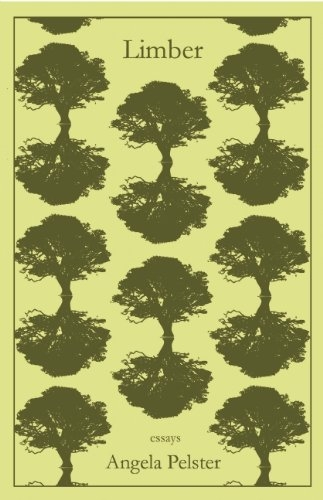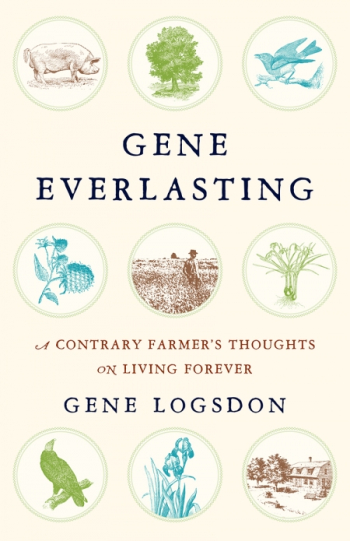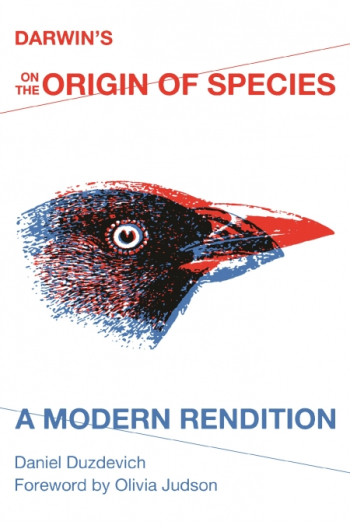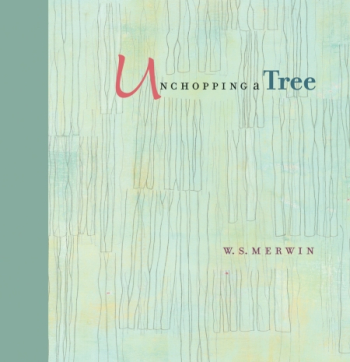Nature Writing
Only Nature Can Build a Tree
Even as variety is the spice of nature itself, so does the mix of literary forms represented in the five books reviewed here provide zest as they celebrate and instruct, puzzle and preach a bit about our duty as custodians of the environment.
They hopscotch from essay to scholarly treatise and back to essay, then to a long pause to reacquaint with Mr. Darwin in modernized voice and, finally, some near-poetic instruction on how to achieve the impossible.
Each of the authors deals with nature in a distinct way, but shares many of the usual suspects—animals, plants, water, deserts, wind and sky and trees, lots and lots of trees.
Limber

Angela Pelster
Sarabande Books
Softcover $15.95 (168pp)
978-1-936747-75-7
Buy: Local Bookstore (Bookshop)
It’s perhaps a bit disingenuous for Angela Pelster to declare that her marvelous collection of essays is not a memoir. She might argue that nature is the principle subject, with an emphasis on trees; trees communicating with one another through roots and fungi, the cinnabar tree that grows on the moon, and the maple tree that should not be taken as a metaphor although “we are both only one strong wind from falling.”
But there is also this about a winter in Alberta, Canada: “It was the time of my life when I was sick and newly divorced, when my house had burned down and my dad was smoking crack.” More than a little memoirist that, even though she salved her distress with a walk through an “arid desert of snow,” observing along the way that the aspen is the heaviest living thing in the world because, below ground, sprouted suckers shoot out for acres from the same enormous root.
The book’s title, Limber, alludes to the limber pine that grows in harsh places and bends to the elements. Limber also describes the literary stylishness of these essays. They are imaginative, instructive, and deviously entertaining. Observations about frogs having teeth on the roofs of their mouths, squirrels being North America’s answer to the monkey, or the magic of the mango serve to draw readers to serious reflections on environmental crimes by man, theological uncertainty, and death’s inevitability.
Angela Pelster has been published in literary journals and has written an award-winning children’s book. Limber should establish her as a force for—and maybe even of—nature.
THOMAS BEVIER (February 27, 2014)
Groundwater for the 21st Century
A Primer for Citizens of Planet Earth

John A. Connors
McDonald and Woodward Publishing
Softcover $39.95 (648pp)
978-1-935778-10-3
“Why learn about water?” asks the first sentence this scholarly and impassioned tome and then for more than 600 pages of dense prose—interspersed with charts, graphs, photographs, and the occasional chemical formula—John A. Connors proceeds to address the question.
The simple and concise answer: “The water upon which our survival depends is fresh liquid water, and some 99% of that water exists beneath the land’s surface.” Connors, who has a doctorate in geology from the University of Idaho, further instructs that rarely has so plentiful a resource been so threatened. The threats include commercial exploitation, contamination and—perhaps the greatest threat of all—by the thirst of a burgeoning human population.
Connors presumes that most “users” of his book will not be professional hydrogeologists. His goal is to provide a resource that will be helpful to those who manage water, study water, write about water, or simply delight in water with all its mysteries and benefits. He strives to be readable and yet avoid the vice of oversimplification; thus along with, for instance, chapters about the hydrologic cycle, aquifers, and contemporary groundwater supply issues, there are also chapters on vadose water and phreatic water and applied hydrogeology.
Connors, in his subtitle, calls his book “a primer.” It is rather more than that, but it will serve anyone involved in the ongoing debate over water use who strives for facts to base an opinion.
THOMAS BEVIER (February 27, 2014)
Gene Everlasting
A Contrary Farmer’s Thoughts on Living Forever

Gene Logsdon
Chelsea Green Publishing
Hardcover $24.95 (192pp)
978-1-60358-539-2
For those who doubt that immortality is possible in the natural order of things, Gene Logsdon, an Ohio farmer who has done a lot of hard hoeing and hard thinking in his eighty years, nominates chickweed and pigweed as plausible candidates for the Great Forever After. For everything and everybody else he’s pretty sure of the natural eventuality.
There’s nothing like a personal brush with death—in his case, a bout with cancer—to focus the mind on the ultimate fate. As with many of his other twenty or so books, this one is centered on farming and Logsdon comes across as a man who can plow a straight furrow as well as turn a neat phrase.
His experience gave him new perspective on life, “a greater feeling of freedom over whether my contrary opinions about science or religion were going to irritate people…Old men can be dangerous to society.”
To grow up on a farm is to learn that there are wrenching moments as we make our way along the food chain. To read his account of a hog butchering, for instance, is to understand why it can make children cry and grown men swig whiskey.
It seems fair to conclude, judging from his essays, that he is a better writer than he is farmer, else how could he have let those weeds get such a hold on his family farm?
THOMAS BEVIER (February 27, 2014)
Darwin’s on the Origin of Species
A Modern Rendition

Daniel Duzdevich
Olivia Judson, contributor
Indiana University Press
Softcover $30.00 (352pp)
978-0-253-01170-1
Buy: Local Bookstore (Bookshop)
Evolution is an ongoing process, as Charles Darwin famously argued, and so, as would be expected, the English language has undergone radical change since 1859 when Darwin published Origin of Species, which still resonates mightily. For the modern-day reader, his convoluted Elizabethan prose and antiquated vocabulary is a heavy load.
The modernized version provided by Daniel Duzdevich, a doctoral student of biology at Columbia University, doesn’t meddle with Darwin’s theories or basic exposition and so his edited Origin remains a weighty trek, but he has made the way a lot smoother.
A foreword by Olivia Judson, a science journalist, explains how the book transformed scientific thought, even before there was even a foggy notion of the age of the planet (4.6 billion years, by modern reckoning). Darwin’s work came as “a huge blow to human vanity,” she writes, because before that “we humans considered ourselves the pet creations of a deity.”
Random comparisons between Duzdevich’s rendition and the original indicate that he is a lighthanded editor. In the summary chapter, for instance, the only the change is to substitute “while” for “whilst” in a key sentence, which reads as follows: “There is grandeur in this view (evolution) of life, with its several powers, having been originally breathed into a few forms or into one; and that, while this planet has gone cycling on according to the fixed law of gravity, from so simple a beginning endless forms most beautiful and most wonderful have been, and are being, evolved.”
THOMAS BEVIER (February 27, 2014)
Unchopping a Tree

W. S. Merwin
Liz Ward, illustrator
Trinity University Press
Hardcover $14.95 (48pp)
978-1-59534-187-7
Buy: Local Bookstore (Bookshop)
Suppose you chopped down a tree and then regretted it because, after all, a tree is a beautiful thing in nature. What to do? Firewood? Board feet? Or, you might consider unchopping it by following the instructions of W. S. Merwin, a man of proven ecological insight and robust poetic tendencies, to put it back together, leaf by leaf, limb by limb, splinter by splinter. Oh, and don’t forget the sawdust.
His instructions are in prose, although of the cadenced variety, which is not surprising because he has written more than fifty books of poetry, winning two Pulitzer Prizes in the process, as well as being selected as the US poet laureate in 2010. As for his tree credentials, at his home in Maui he established a conservancy with more than 800 palm species.
Unchopping a tree is tedious work, and he warns that “even in the best of circumstances it is a labor that will make you wish often that you had won the favor of a universe of ants, the empire of mice, or at least a local tribe of squirrels.” The job requires sophisticated adhesives and some heavy machinery. To help understand the inner works of a tree, his manual includes eleven silverpoint drawings by Liz Ward of the cellular life of trees.
And so, what would you have after all the effort? Why a tree, of course.
THOMAS BEVIER (February 27, 2014)
Thomas Bevier
